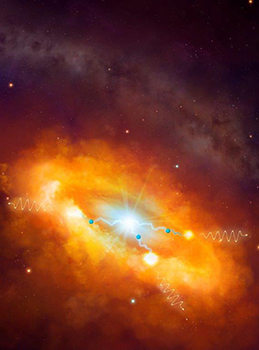Latest News Archive
Please select Category, Year, and then Month to display items
28 June 2022
|
Story Nonsindiso Qwabe
|
Photo ALBERT VAN BILJON
 In conversation: Prof Petersen and Leanne Manas.
In conversation: Prof Petersen and Leanne Manas.
An outward-looking, globally competitive university that ranks among the top-tier universities in South Africa and on the continent, driven by a strong human-centred, diverse social-justice approach. This is at the heart of the vision
Prof Francis Petersen, Rector and Vice-Chancellor of the UFS, shared with multi-award-winning
news anchor
Leanne Manas during a sit-down conversation on Friday 22 July 2022.
Prof Petersen reflected on the great strides and difficulties faced during his first term, as well as navigating the UFS through the COVID-19 pandemic to position the institution in a strategic and focused manner as a university of choice on the continent
and in other parts of the globe.
 Prof Prakash Naidoo, Vice-Rector: Operations, introduced Leanne Manas
Prof Prakash Naidoo, Vice-Rector: Operations, introduced Leanne Manas
 Prof Francis Petersen
Prof Francis Petersen
 Leanne Manas and Prof Petersen In conversation
Leanne Manas and Prof Petersen In conversation
 Leanne Manas
Leanne Manas
 Leanne Manas meeting our staff members.
Leanne Manas meeting our staff members.
 Leanne Manas meeting our staff members.
Leanne Manas meeting our staff members.
 Leanne Manas meeting our staff members.
Leanne Manas meeting our staff members.
 Prof Petersen with some of our staff members
Prof Petersen with some of our staff members
 From the left; Prof Prakash Naidoo, Leanne Manas, Prof Francis Petersen and Temba Hlasho, Executive Director: Student Affairs
From the left; Prof Prakash Naidoo, Leanne Manas, Prof Francis Petersen and Temba Hlasho, Executive Director: Student Affairs
 Leanne Manas meeting our staff members.
Leanne Manas meeting our staff members.
 From the left; Prof Prakash Naidoo, Prof Francis Petersen and Quinton Koetaan, Senior Director; HRA
From the left; Prof Prakash Naidoo, Prof Francis Petersen and Quinton Koetaan, Senior Director; HRA
 Leanne Manas meeting our staff members.
Leanne Manas meeting our staff members.
Two scientists part of team that discovers the source of the highest energy cosmic rays at the centre of the Milky Way
2016-03-22

Artist's impression of the giant molecular clouds surrounding the Galactic Centre, bombarded by very high energy protons accelerated in the vicinity of the central black hole and subsequently shining in gamma rays.
Artist's impression: © Dr Mark A. Garlick/ H.E.S.S. Collaboration Spotlight photo:
Dr Brian van Soelen and Prof Pieter Meintjes of the UFS Department of Physics.
Photo: Charl Devenish
|
H.E.S.S. (High Energy Stereoscopic System) scientists publically revealed their latest galactic discovery in the international science journal, Nature, on 16 March 2016. These scientists were able to pinpoint the most powerful source of cosmic radiation – which, up to now, remained a mystery.
Part of this team of scientists are Prof Pieter Meintjes and Dr Brian van Soelen, both in the University of the Free State (UFS) Department of Physics. Dr Van Soelen explains that they have discovered a proton PeVatron – a source that can accelerate protons up to energies of ~1 PeV (10^15 eV) – at the centre of the Milky Way. The supermassive black hole called Sagittarius A has been identified as the most plausible source of this unprecedented acceleration of protons.
The protons are accelerated to Very High Energy (VHE) gamma rays. The energy of these protons are 100 times larger than those achieved by the Large Hadron Collider at CERN (the European Organization for Nuclear Research).
According to Dr Van Soelen, the fact that this research has been published in Nature demonstrates the importance and pioneering nature of the research conducted by H.E.S.S. The H.E.S.S. observatory – operational in Namibia – is a collaboration between 42 scientific institutions in 12 countries.
In 2006, H.E.S.S. was awarded the Descartes Prize of the European Commission – the highest recognition for collaborative research – and in 2010 the prestigious Rossi Prize of the American Astronomical Society. The extent of the observatory’s significance places it among the ranks of the Hubble Space Telescope and the telescopes of the European Southern Observatory in Chile.
“The next generation VHE gamma-ray telescope,” Dr Van Soelen says, “will be the Cherenkov Telescope Array (CTA), which is currently in the design and development stage.” Both Dr Van Soelen and Prof Meintjes are part of this project as well.
H.E.S.S. has issued a complete statement about the paper published in Nature.